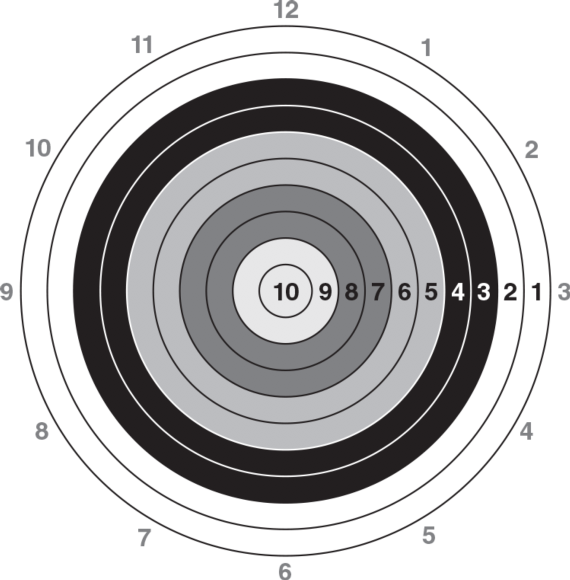Drill: Call the Shot
This is an excerpt from Archery Drill Book, The by Steve Ruis,Mike Gerard.
Purpose
To compete at a high level, an archer must compare the outcome of each shot with an estimation of how well the shot was performed, usually by reviewing the arrow just shot from memory. This drill helps archers store their shots in short-term memory to recall them so they can compare that with where their arrows actually land on the target.
Signs It Is Needed
Archers who cannot replay a video, including sights and feels, of their previous shot in their minds from memory are at a disadvantage and need to practice this. Archers must be able to recall at least a “snapshot” of where their sight aperture or arrow point was at the moment of release. (Realize that it is moving.)
How to Do It
This is easiest done with a helper. After your arrow is away, turn your head up the line so you can't see the target and tell your helper where the arrow landed. The helper uses a spotting scope or binoculars to check the actual hit point of the arrow and relays that position back to you.
Positions on target faces, at least the round ones, are usually given by overlaying an imaginary old-style clock face on the target face. Positions are indicated by color and time (“Your arrow is at 8:30 in the red”) or by scoring ring and time (“It's a 7-ring at 2 o'clock hit”).
Variations
If you get bored shooting at the center and hitting it, try aiming off. Aim at 6 o'clock in the red or 11 o'clock in the 4-ring.
If you do not have a helper, you can do this by yourself. Call the shot out loud, then check the position of the arrow with your optics. Some do this while running a video camera. Both the call and the spot are called out to the camera, which makes a running record of the drill results. You can then watch the video by yourself or with your coach and count up how many hits and misses you had in a session.
Tips
Obviously the distance of the target varies with the skill of the archer. If you cannot reliably hit a target where you are aiming, then you need to move the target closer to do this drill. This requires a well-tuned bow and arrow and a skilled archer.

Archers use traditional clock hand positions to identify locations on round targets.
More Excerpts From Archery Drill Book, TheSHOP

Get the latest insights with regular newsletters, plus periodic product information and special insider offers.
JOIN NOW


